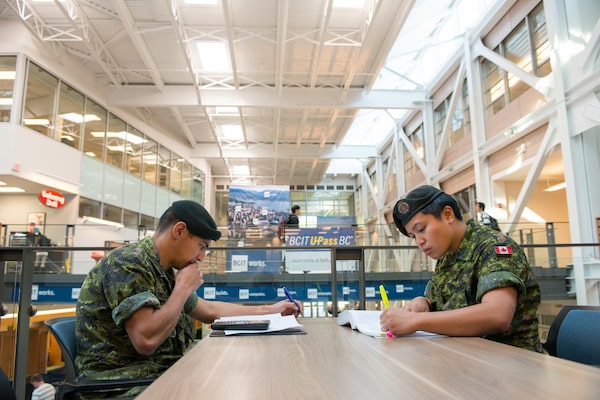
The British Columbia Institute of Technology’s legion military skills program applies veterans’ knowledge and skills toward college programs.Wendy D/British Columbia Institute of Technology
Colleges have long proven nimble in the face of disruption, but they’re now becoming more aggressive in their attempts to create the right offerings for a changing job market.
“This moment right now is really turning out to be the first big test of Canada’s college system,” says Linda Franklin, president of Colleges Ontario, which represents the province’s 24 colleges.
“We’ve always been able to pivot with industry and the labour market, but that’s becoming more and more challenging.”
Colleges and technical institutes nationwide develop programs with advisory committees drawn from industry, familiar with up-to-the-minute trends, and are traditionally able to bring programs to market much faster than universities. Students have responded in kind – enrolment in the nation’s colleges has increased 34 per cent since 2000.
That system has proven resilient, but as Franklin notes, “in some subjects nowadays, especially science and engineering, the pace of change is so quick that students can be out-of-date the day after they graduate.”
Kevin Wainwright, an associate dean at the British Columbia Institute of Technology (BCIT), says there isn’t always a linear relationship between a particular program and a job.
“Instead, it’s about your bundle of skills going into the economy,” he says.
Colleges Ontario president Linda Franklin.Handout
Few know this better than mature students looking to jump from one industry to another. Derek McKnight is a 39-year-old student in his final year at Ontario’s Durham College, studying electromechanical engineering technologies. After more than a decade in the print and packaging industry (“think cereal boxes,” he says), McKnight was let go as part of a restructure.
“I wasn’t doing what I really wanted to anyway,” he says, explaining his choice to return to school rather than jump right back into the work force.
Electromechanical engineering, which sits at the intersection of robotics and artificial intelligence, is one of the fastest-changing fields of study.
Yet McKnight has found that he’s been able to repackage existing skills – from sales experience to working in a manufacturing environment – and apply them to his new field of study.
It doesn’t hurt, he says, that “the teachers understand the industry; all through the program, they’re keeping us aware of what’s happening right now and what’s anticipated in the future.”
McKnight is to be able to devote his time to a full course of study, a luxury that isn’t always an option for mature learners.
“One of the biggest barriers is time,” says Wainwright. “The average age of college students is older than undergraduate schools, and many students have families, lives, they don’t have time to take years out for school.”
Micro-credentials are one emerging solution to that problem. Highly specific credentials earned in weeks or even days are applied to a student’s existing body of skills and experience. This year, the Ontario government announced $40-million in funding to help auto-industry workers transition to new sectors; $3-million will be spent on developing micro-credentials.
Along with micro-credentials, another emerging trend is advanced placement.
BCIT’s legion military skills program, developed in 2009, assesses the knowledge and skills of veterans and applies that experience toward college programs, shortening the length of time required to earn a credential. That program led more recently to the national advanced placement and prior learning program, which expanded the program nationally, and to non-military students.
And many colleges have begun working with specific employers. In 2017, Algonquin College in Ottawa collaborated with e-commerce company Shopify to design a media and design course.
These kinds of changes should be seen not as radical, says Franklin, but as a natural and needed evolution. “We’re doing the same thing we’ve always done,” she says.
“We just have to do it faster than ever before.”